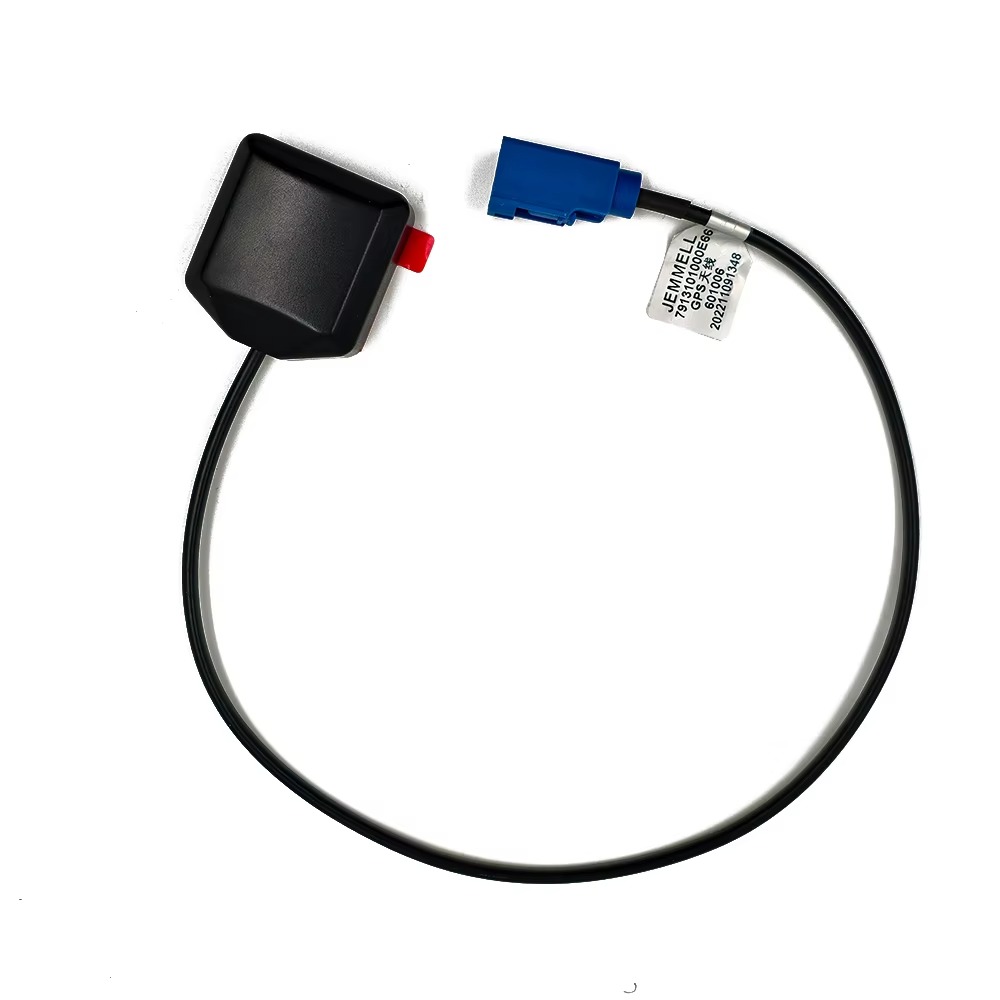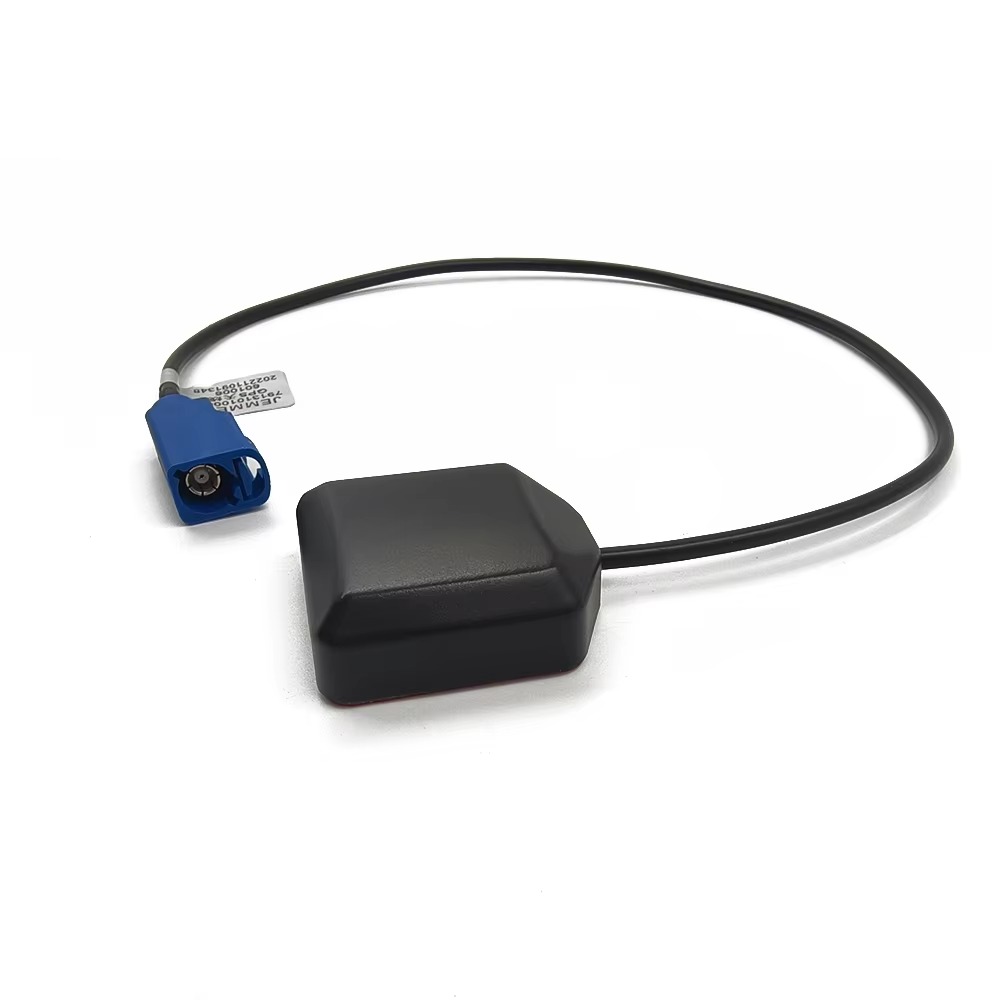The Magnetic Mount GPS Antenna’s capabilities are rooted in its carefully calibrated technical specifications, each contributing to its overall efficiency and reliability:
Frequency Range: Dual-Constellation Support for Global Coverage
The antenna operates on two key frequencies:
1.57542 GHz (GPS L1): This is the primary frequency of the United States’ GPS system, the most widely used satellite navigation network globally. GPS L1 signals are broadcast by satellites in medium Earth orbit, providing global coverage and serving as the backbone of most vehicle tracking systems.
1.561 GHz (BeiDou B1): This frequency belongs to China’s BeiDou Navigation Satellite System (BDS), which has rapidly expanded to offer global coverage. BeiDou B1 complements GPS by providing additional signal redundancy, reducing the risk of signal loss in areas where GPS reception is weak (such as dense urban environments or regions with intentional jamming).
By supporting both frequencies, the antenna leverages the strengths of two major GNSS constellations, ensuring that vehicles remain tracked even if one system experiences temporary outages or interference. This dual-band capability is particularly valuable for fleet managers operating in diverse geographic regions, where reliance on a single constellation could lead to gaps in data.
Gain: 28 dBi for Amplified Signal Reception
Gain, measured in decibels relative to an isotropic radiator (dBi), quantifies the antenna’s ability to focus and amplify incoming signals. A gain of 28 dBi is exceptionally high for a vehicle-mounted antenna, enabling it to capture faint signals from satellites low on the horizon or obstructed by buildings, trees, or other obstacles.
In urban environments, where skyscrapers can block or reflect GPS signals (a phenomenon known as “urban canyon effect”), this high gain is critical. It ensures that even weak or scattered signals are amplified to a level where they can be processed by the receiver, maintaining accurate positioning. For fleet management, this means precise tracking of vehicles in downtown areas, where delivery schedules and route optimization depend on real-time location data.
VSWR: ≤2.0 for Efficient Signal Transfer
Voltage Standing Wave Ratio (VSWR) measures the efficiency of signal transfer between the antenna and the connected device. A VSWR of ≤2.0 indicates that the antenna is well-matched to the transmission line, minimizing signal reflection and loss. This is essential for preserving the integrity of the amplified GPS and BeiDou signals as they travel from the antenna to the tracking or navigation system.
In vehicle applications, where cable lengths can vary and electronic noise is common (from engines, radios, or other on-board systems), low VSWR ensures that the signal remains strong and clean. This reduces the risk of positioning errors caused by signal degradation, ensuring that fleet managers and drivers receive accurate location updates.
Impedance: 50 Ohms for Universal Compatibility
Impedance, measured in ohms, is the resistance of the antenna to alternating current. A 50-ohm impedance is the industry standard for RF (radio frequency) systems, including most GPS receivers, tracking devices, and fleet management terminals. This standardization ensures that the Magnetic Mount GPS Antenna is compatible with a wide range of equipment, eliminating the need for impedance-matching adapters and simplifying integration.
Whether connected to a basic GPS navigator, a sophisticated fleet tracking system, or a GNSS terminal, the antenna’s 50-ohm impedance ensures efficient power transfer and minimal signal loss, maintaining performance across different devices and manufacturers.
Connector Type: Fakra Female with Gold-Plated Pin
The antenna features a Fakra female connector, a specialized RF connector widely used in automotive applications. Fakra connectors are designed to withstand vibration, temperature fluctuations, and moisture—common challenges in vehicle environments. The gold-plated pin inside the connector enhances conductivity and resists corrosion, ensuring a stable, long-lasting connection.
This connector type is particularly valuable for fleet management, where equipment is often moved between vehicles or subjected to heavy use. The secure locking mechanism of Fakra connectors prevents accidental disconnection, while the gold plating ensures consistent signal transmission even after repeated plugging and unplugging.
Cable Length: 0.36 Meters for Flexible Routing
The antenna is equipped with a 0.36-meter (approximately 14-inch) coaxial cable, a length carefully chosen to balance flexibility and signal integrity. This cable is long enough to route from the antenna (mounted on the roof or trunk) to the tracking device (typically located inside the vehicle, such as under the dashboard or in the glove compartment) without excessive slack, which can cause interference or tangling.
The coaxial cable is constructed with high-quality materials to minimize signal loss, ensuring that the amplified GPS and BeiDou signals reach the receiver with minimal degradation. Its flexibility allows for easy routing through vehicle panels or weatherstripping, preserving the vehicle’s aesthetics and aerodynamics.
Mounting Method: Magnetic Base + 3M Adhesive for Versatility
The antenna’s dual mounting system is one of its most innovative features:
Magnetic Base: A powerful neodymium magnet embedded in the base allows for instant attachment to any ferrous (metal) surface, such as a car roof, hood, or trunk lid. This makes installation quick and tool-free, ideal for fleet managers who need to deploy tracking equipment across multiple vehicles efficiently.
3M Adhesive: A layer of industrial-grade 3M adhesive on the base ensures secure mounting on non-metallic surfaces, such as plastic, fiberglass, or composite materials. This adhesive creates a permanent bond when applied correctly, withstanding vibration, temperature changes, and exposure to water.
Together, these mounting options make the antenna suitable for virtually any vehicle type, from steel-bodied trucks to aluminum or composite-bodied cars. The low-profile design (typically less than 2 cm in height) minimizes wind resistance and reduces the risk of damage from low-hanging branches or car washes.
Material: ABS for Durability and Weather Resistance
The antenna’s housing is constructed from ABS (Acrylonitrile Butadiene Styrene), a thermoplastic polymer known for its strength, impact resistance, and resistance to chemicals and UV radiation. ABS is an ideal material for vehicle antennas, as it can withstand the rigors of daily use—including exposure to rain, snow, road salt, and extreme temperatures—without cracking, fading, or degrading.
In addition to its durability, ABS is lightweight, which reduces strain on the mounting system, and non-conductive, ensuring that it does not interfere with the antenna’s RF performance. The material’s smooth surface also makes the antenna easy to clean, maintaining its appearance and functionality over time.
Polarization: RHCP for Enhanced Signal Capture
Right-Hand Circular Polarization (RHCP) is critical for GPS and BeiDou antennas, as satellite signals are broadcast with circular polarization. As these signals pass through the atmosphere or reflect off surfaces (such as buildings or the ground), their polarization can become distorted. RHCP antennas are uniquely capable of receiving these depolarized signals, ensuring consistent reception even in challenging environments.
This polarization type gives the Magnetic Mount GPS Antenna a distinct advantage over linearly polarized antennas, which can lose up to 50% of the signal if their orientation does not align with the incoming waves. For vehicle tracking, this means reliable positioning in urban areas, where reflections are common, and in rural areas, where atmospheric interference may distort signal polarization.
Temperature Range: -40°C to +85°C for All-Climate Performance
The antenna is designed to operate and store within a temperature range of -40°C to +85°C, making it suitable for use in extreme climates—from the freezing winters of Siberia to the scorching deserts of the Middle East. This wide range ensures that the antenna’s performance remains consistent, even when exposed to the temperature fluctuations common in vehicles (such as parked cars in direct sunlight or cold starts in subzero weather).
Temperature stability is critical for maintaining the antenna’s electrical properties, such as impedance and gain. The ABS housing and internal components (including the antenna element and LNA) are rated for this temperature range, ensuring that the antenna does not degrade or fail under extreme conditions.
The Magnetic Mount GPS Antenna incorporates several design innovations that make it uniquely suited to the challenges of vehicle tracking and navigation:
Integrated Low-Noise Amplifier (LNA)
To achieve its 28 dBi gain, the antenna includes a built-in low-noise amplifier (LNA), which amplifies weak satellite signals before they reach the receiver. The LNA is positioned close to the antenna element to minimize signal loss, and it is designed to introduce minimal noise—critical for preserving the integrity of faint signals.
This integration is particularly important for vehicle applications, where the distance between the antenna and receiver can introduce signal attenuation. By amplifying the signal at the source, the LNA ensures that the receiver receives a strong, clean signal, even after traveling through the coaxial cable.
Compact, Aerodynamic Profile
The antenna’s low-profile design (typically around 6 cm in diameter and 2 cm in height) minimizes wind resistance, reducing fuel consumption and preventing wind noise. This is especially valuable for commercial fleets, where even small improvements in aerodynamics can lead to significant fuel savings over time.
The compact size also makes the antenna less obtrusive, preserving the vehicle’s appearance and reducing the risk of theft or damage. Unlike larger antennas, which may be knocked off by low branches or car washes, this design is rugged enough to withstand daily wear and tear.
Weatherproof Construction
The antenna’s housing is fully weatherproof, with a sealed design that protects internal components from moisture, dust, and debris. This is achieved through tight tolerances in the ABS housing and a rubber O-ring around the connector interface, preventing water ingress even in heavy rain or car washes.
Weather resistance is critical for maintaining performance in outdoor environments, where exposure to moisture can cause corrosion of the LNA or antenna element, leading to signal loss. The antenna’s IP67 or higher rating (depending on the model) ensures that it can withstand temporary immersion in water, making it suitable for use in flood-prone areas or vehicles that are regularly washed.
EMI/RFI Shielding
Vehicles are filled with electronic systems—engines, radios, air conditioning, and more—that can generate electromagnetic interference (EMI) or radio frequency interference (RFI), which can disrupt GPS signals. The Magnetic Mount GPS Antenna includes EMI/RFI shielding in its housing, which blocks these unwanted signals from reaching the antenna element and LNA.
This shielding is particularly important for fleet management systems, which often operate alongside other electronic equipment (such as two-way radios or dashcams). By isolating the antenna from interference, it ensures that positioning data remains accurate and reliable.




































































 Language
Language
 En
En Cn
Cn Korean
Korean

 Home >
Home > 








 18665803017 (Macro)
18665803017 (Macro)













